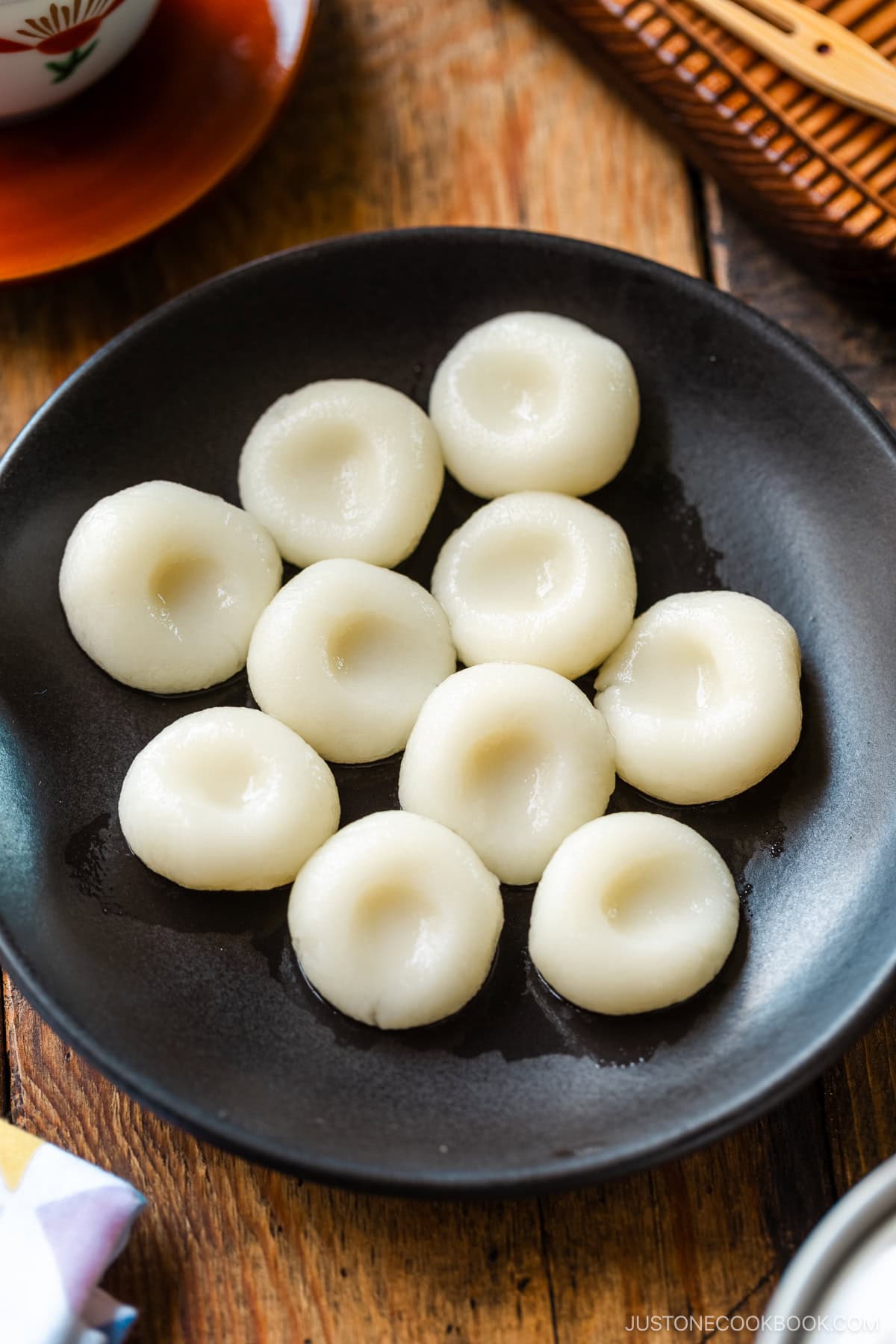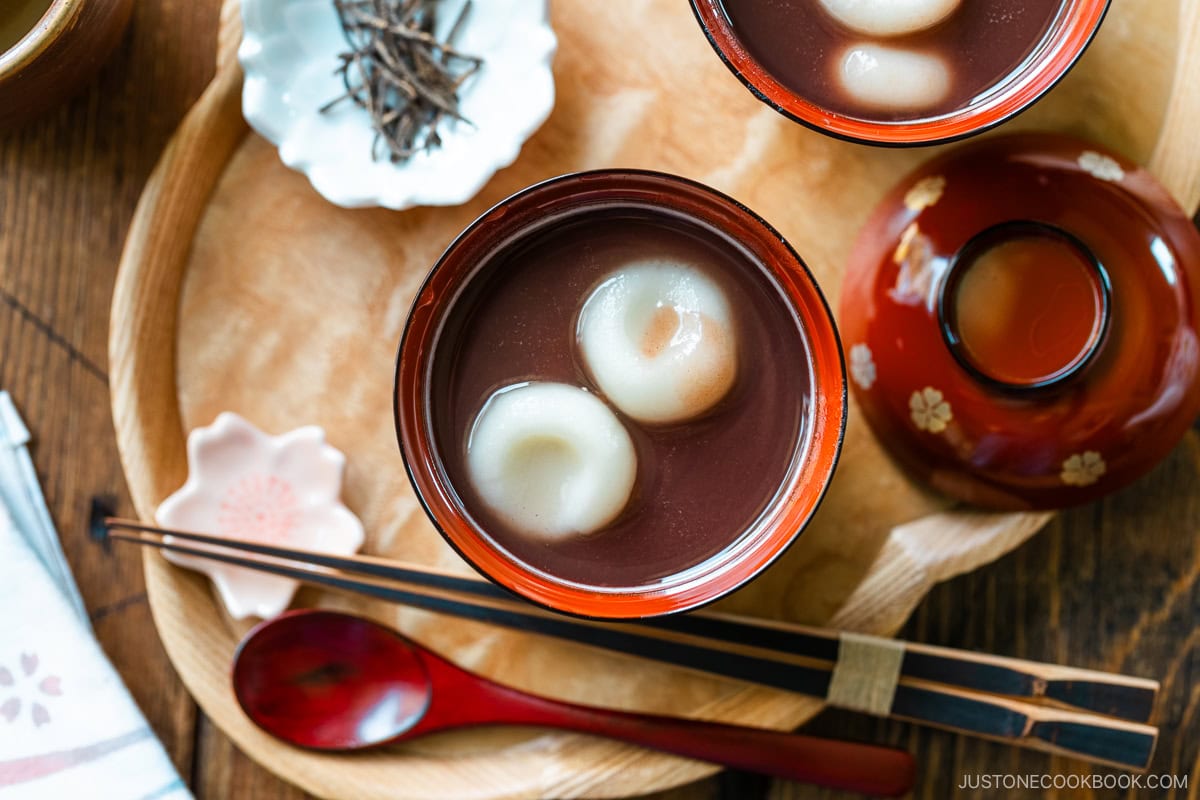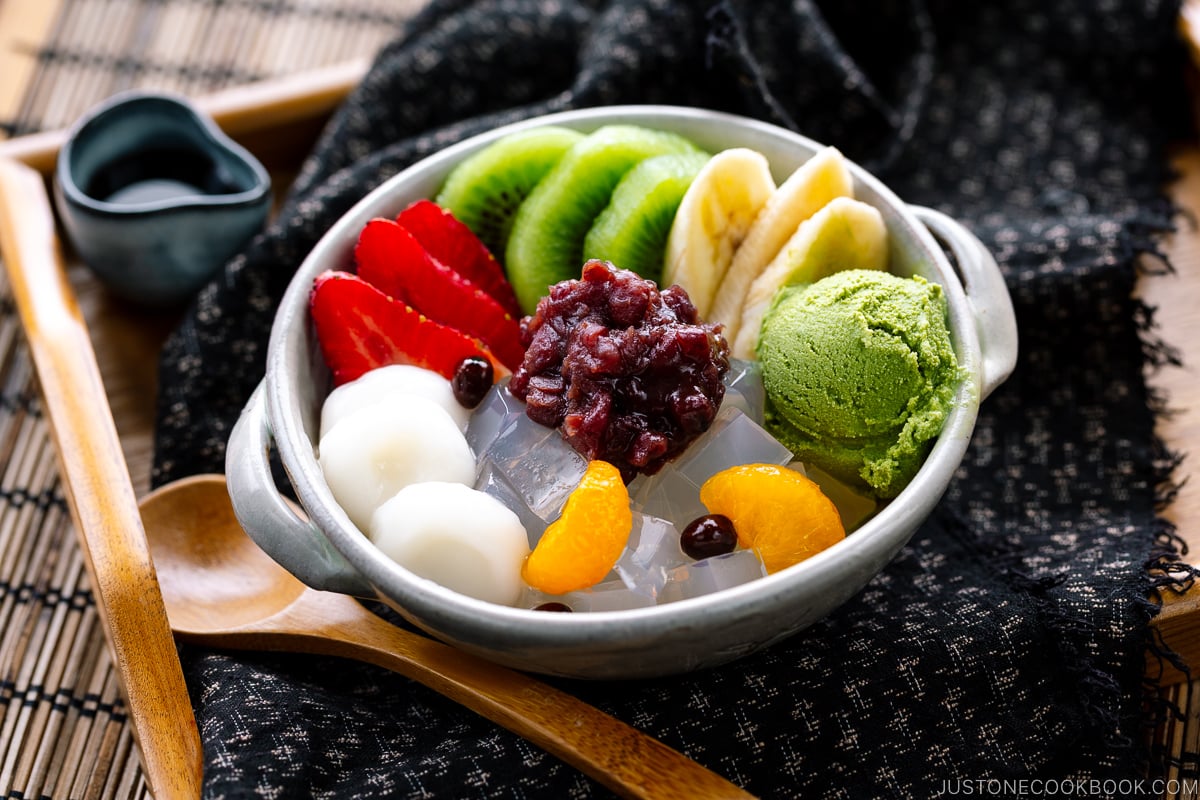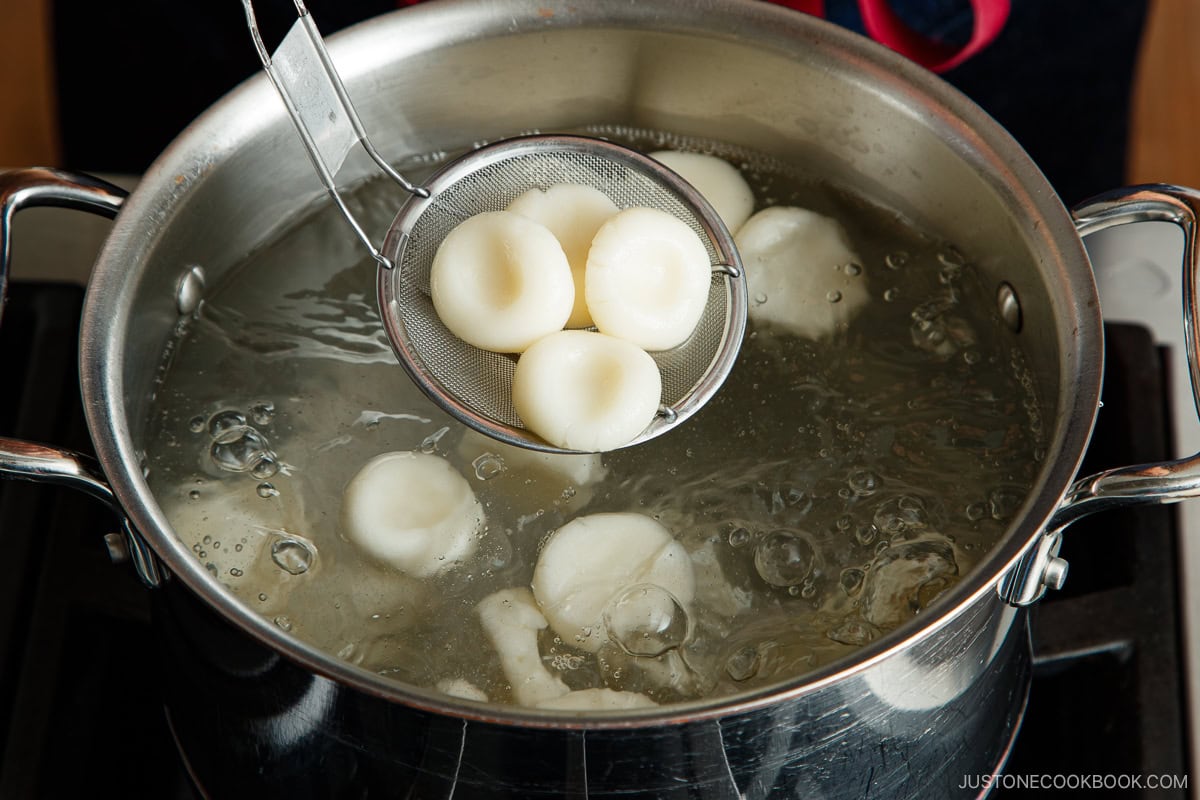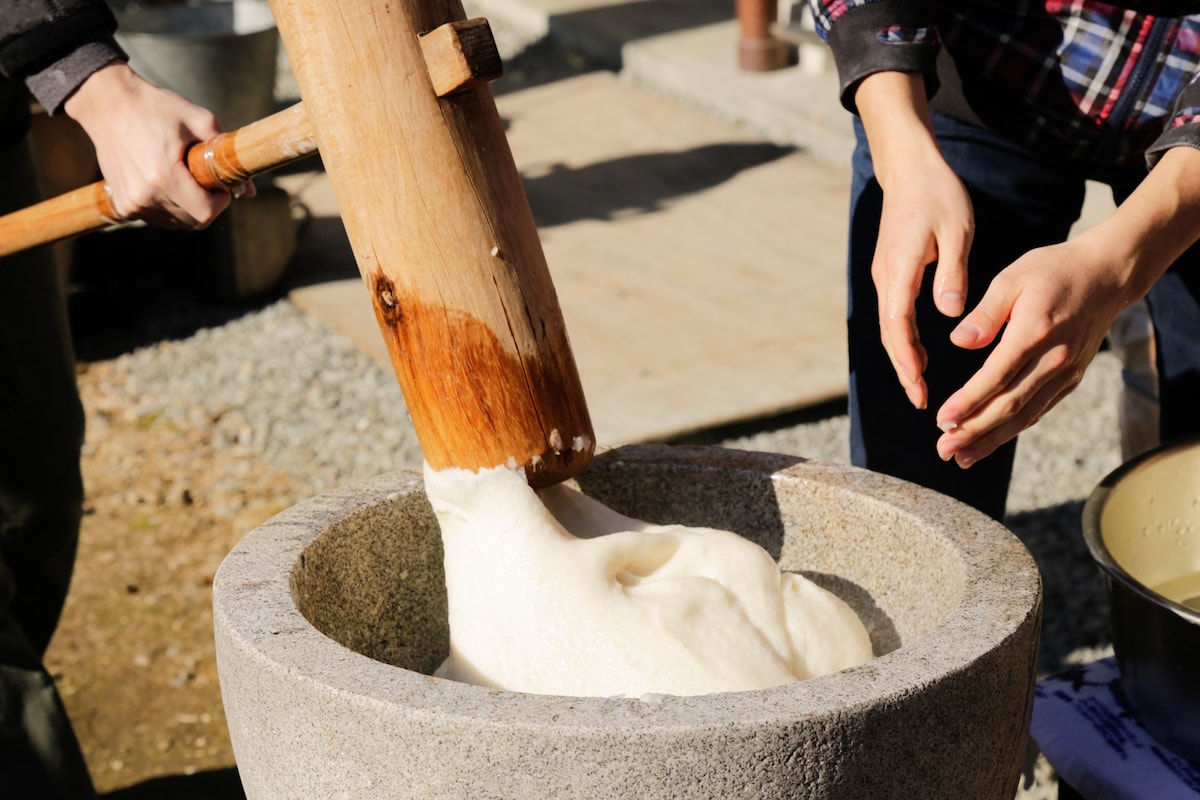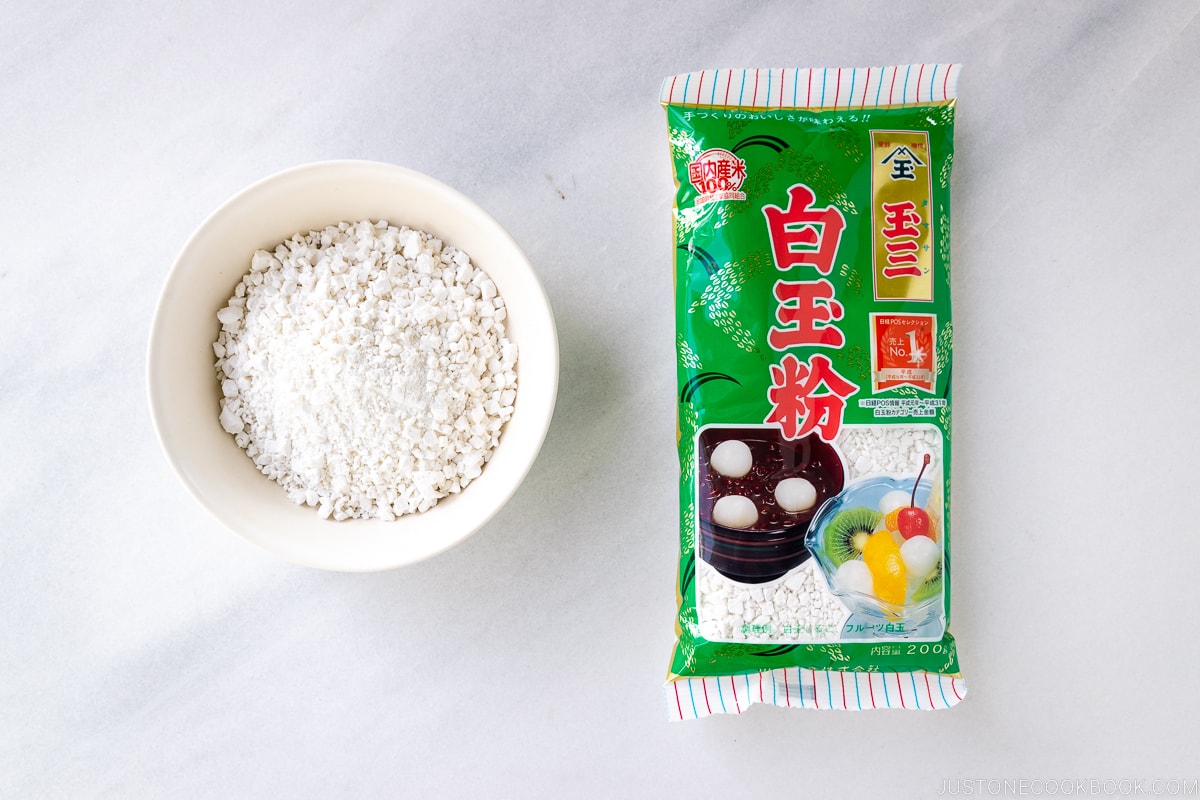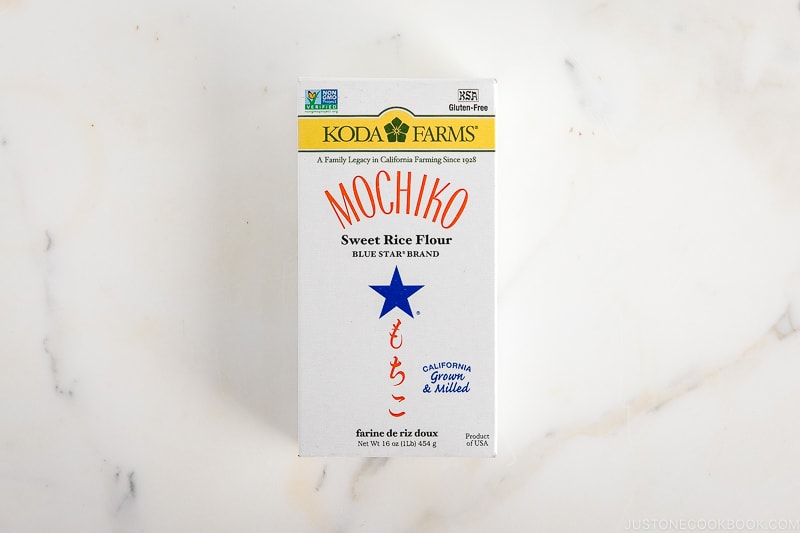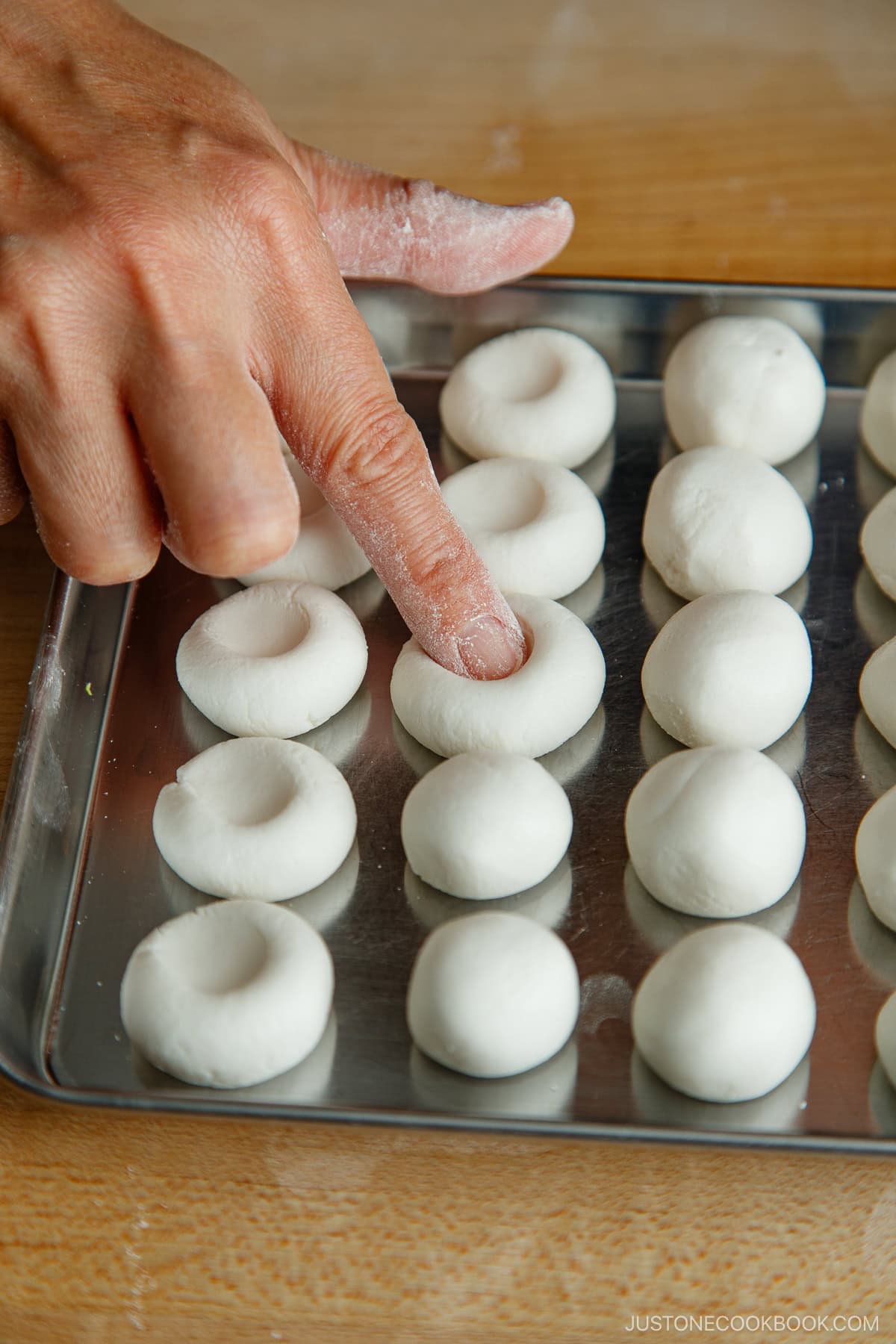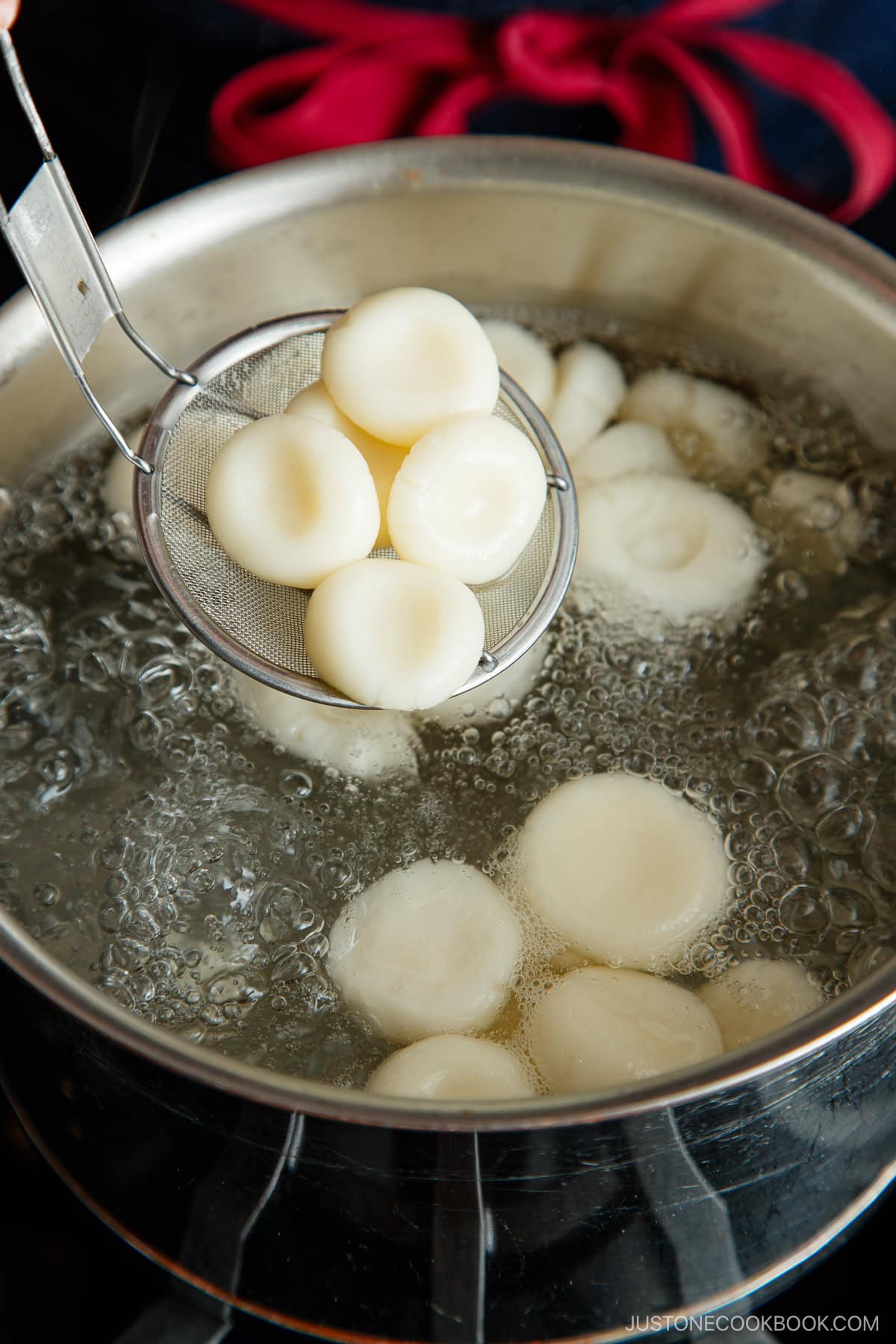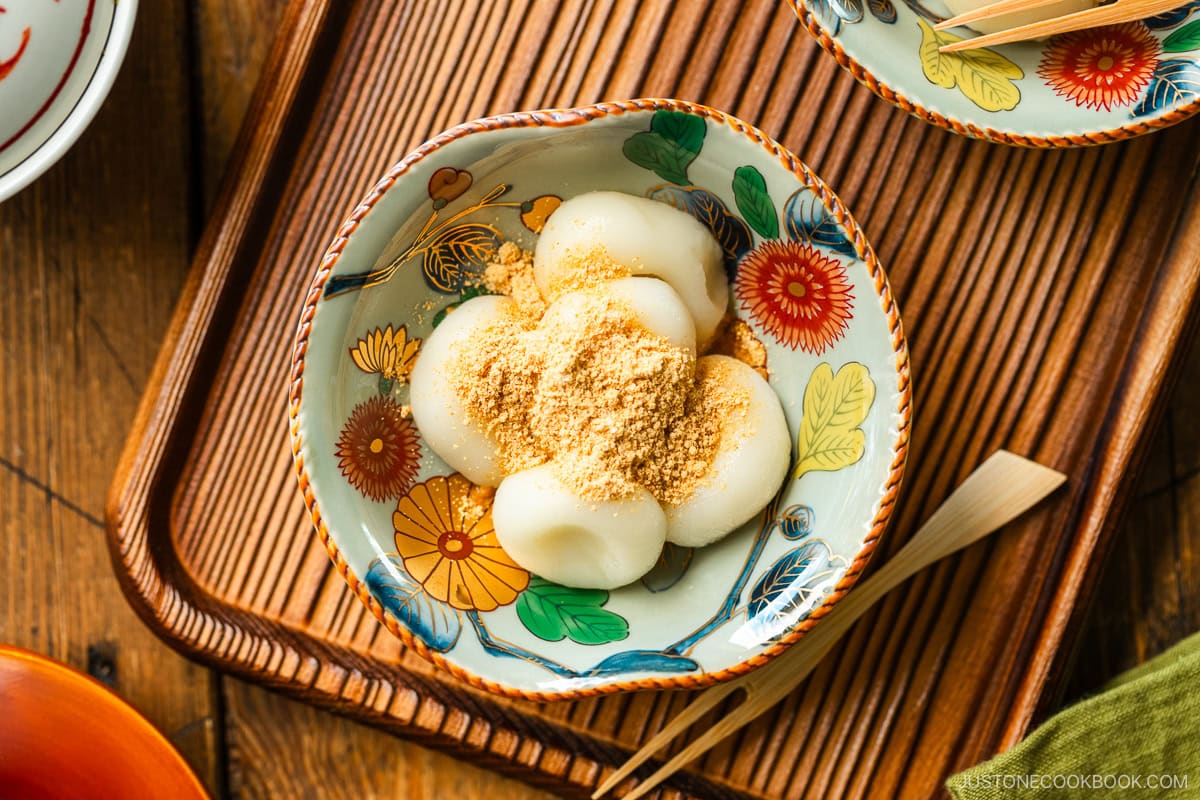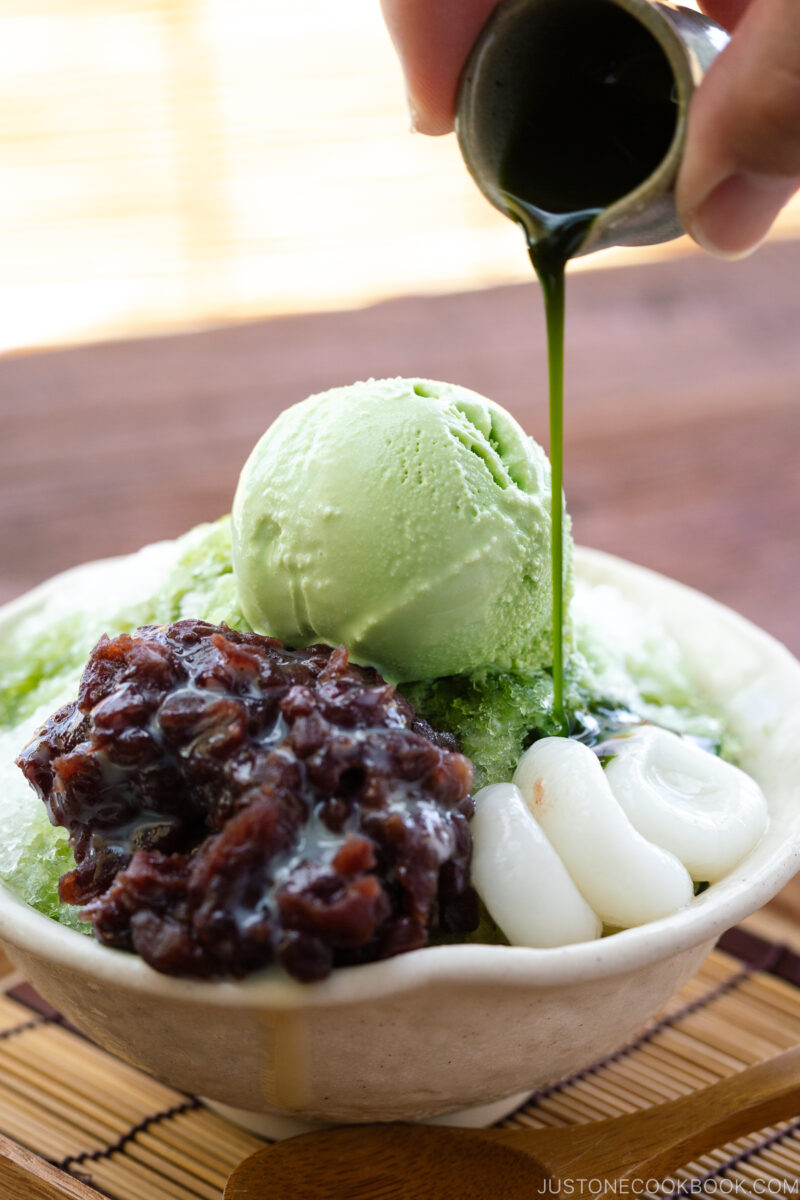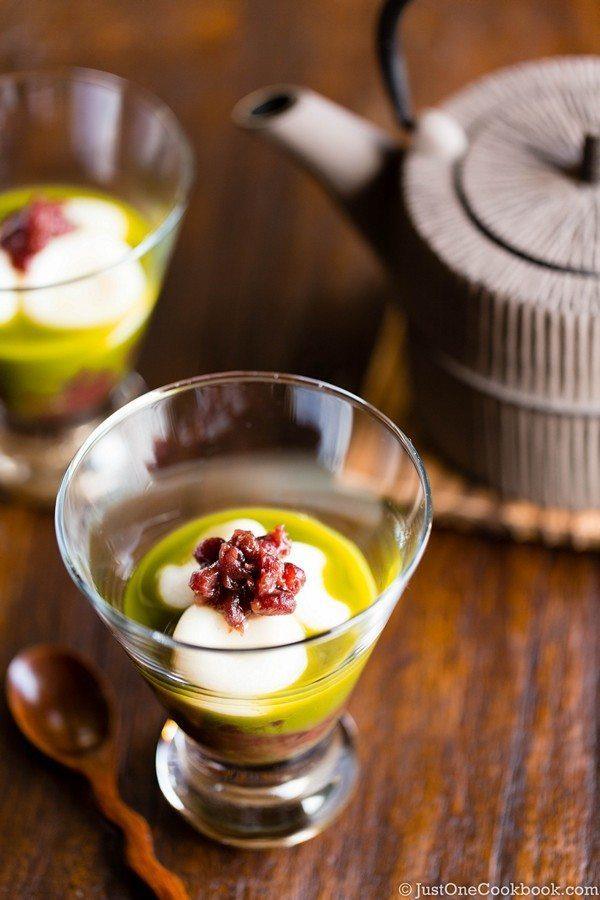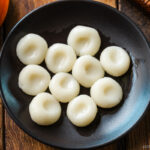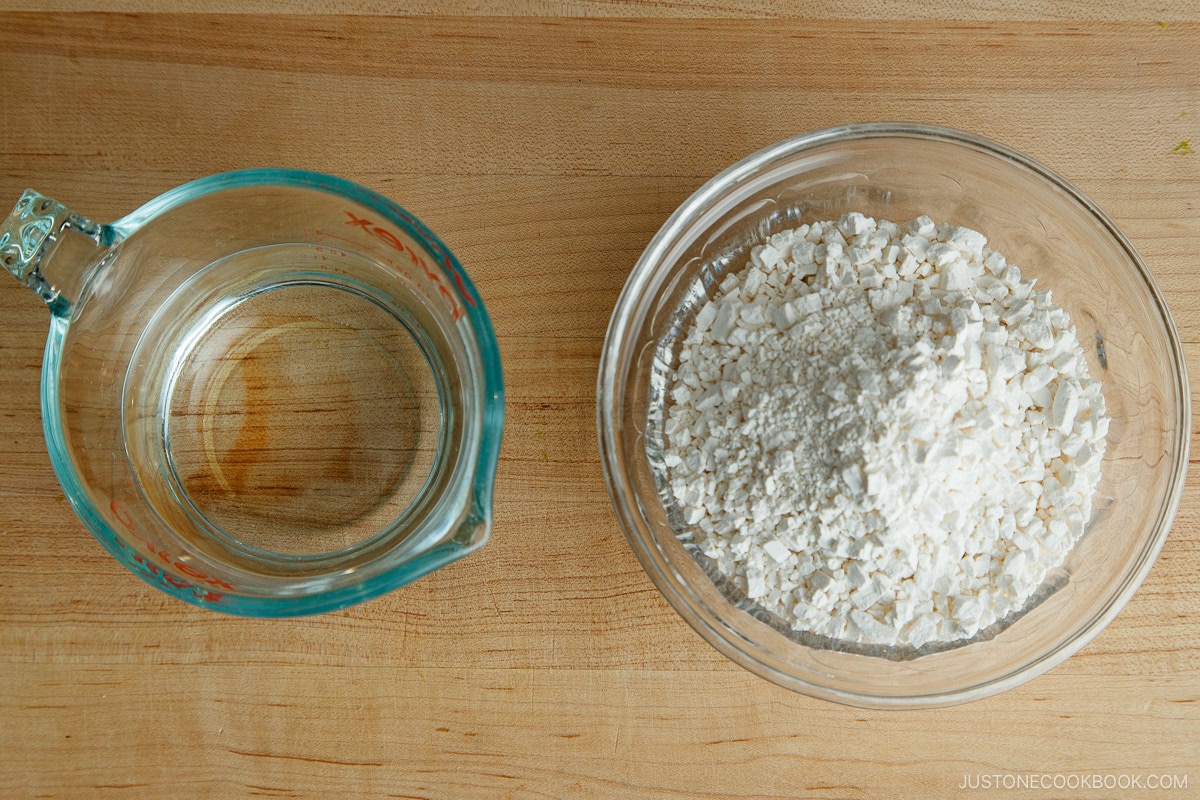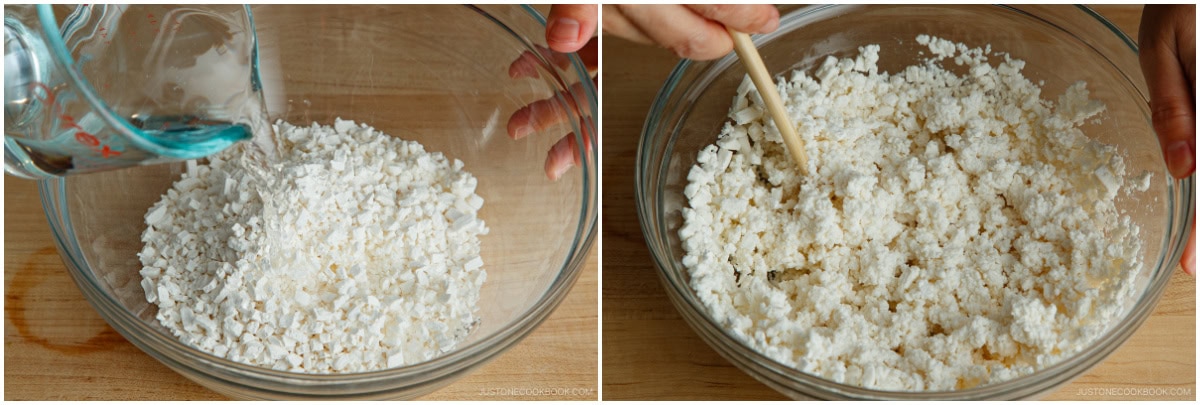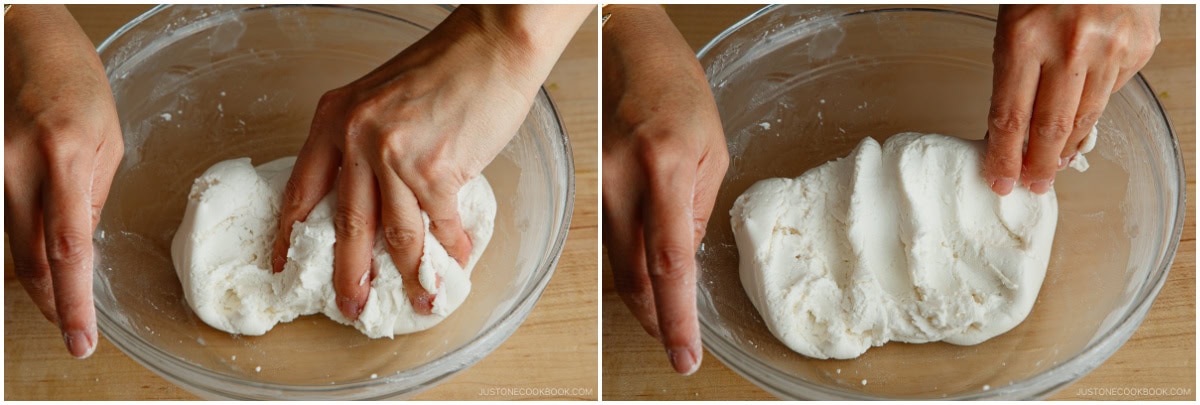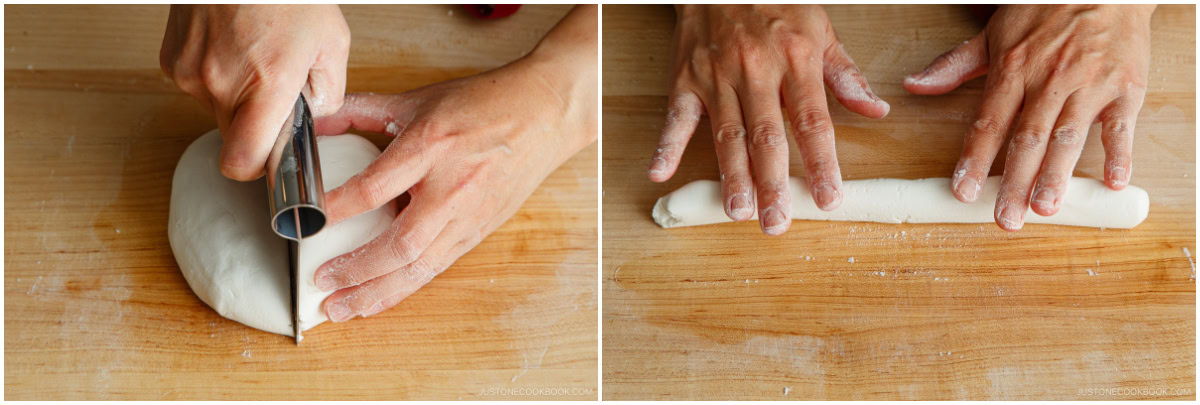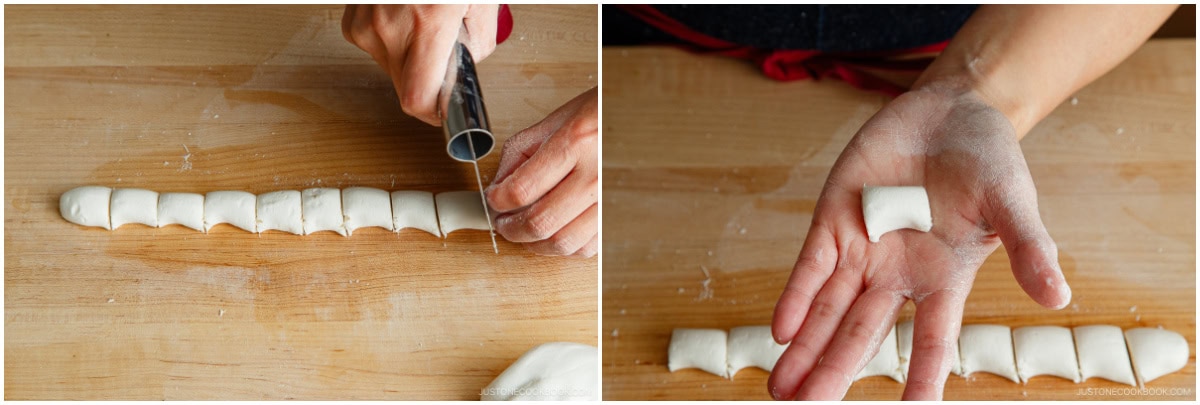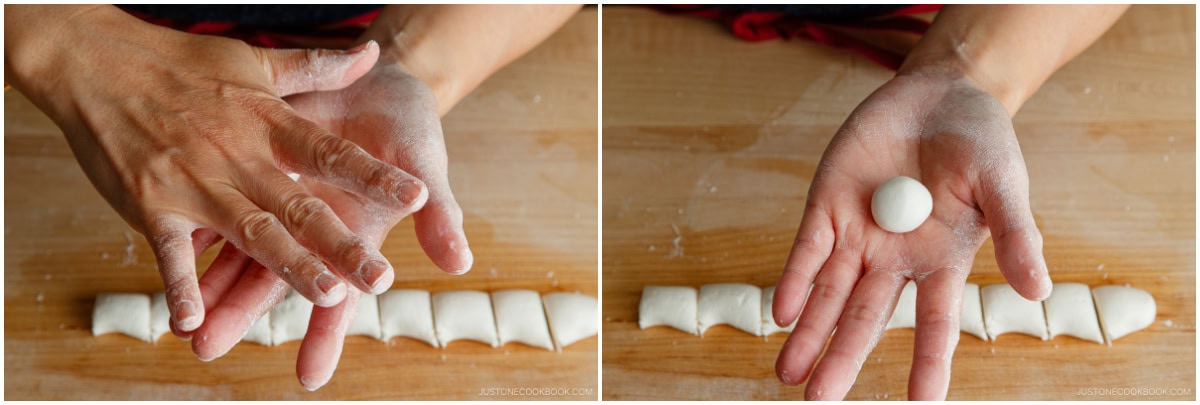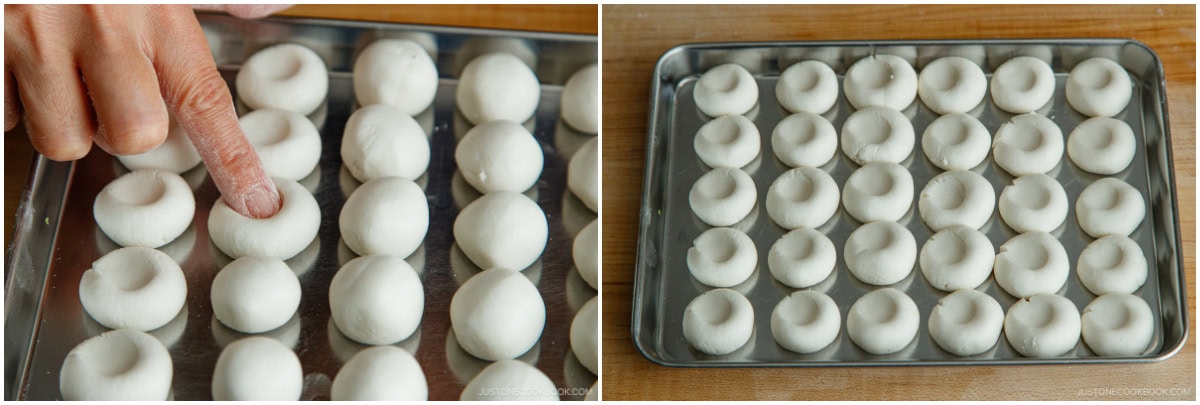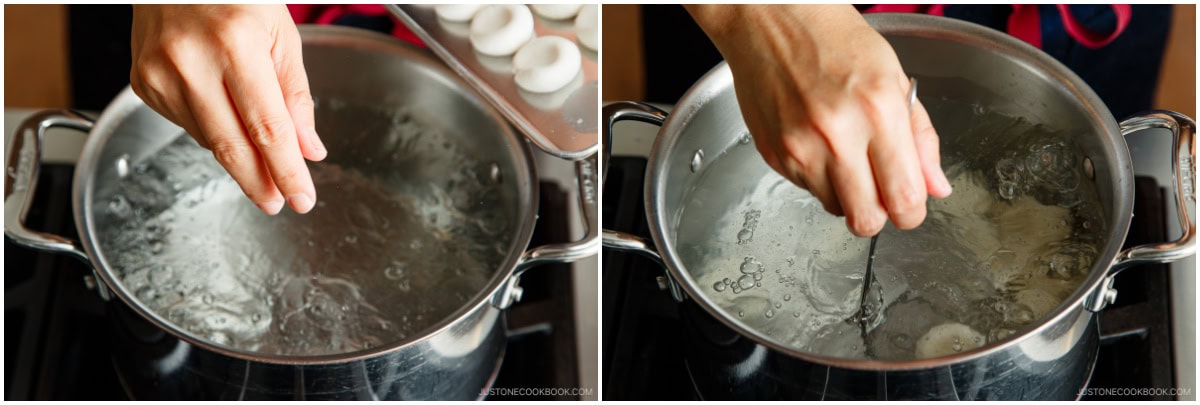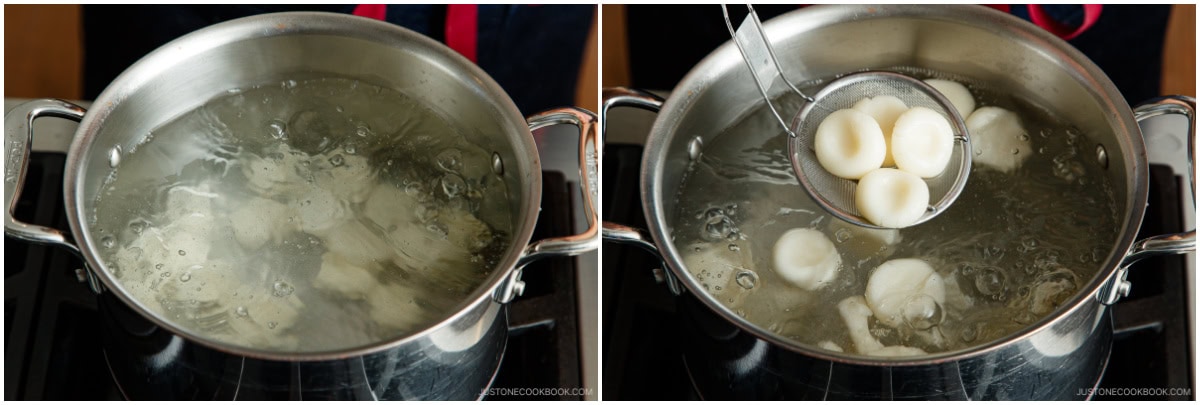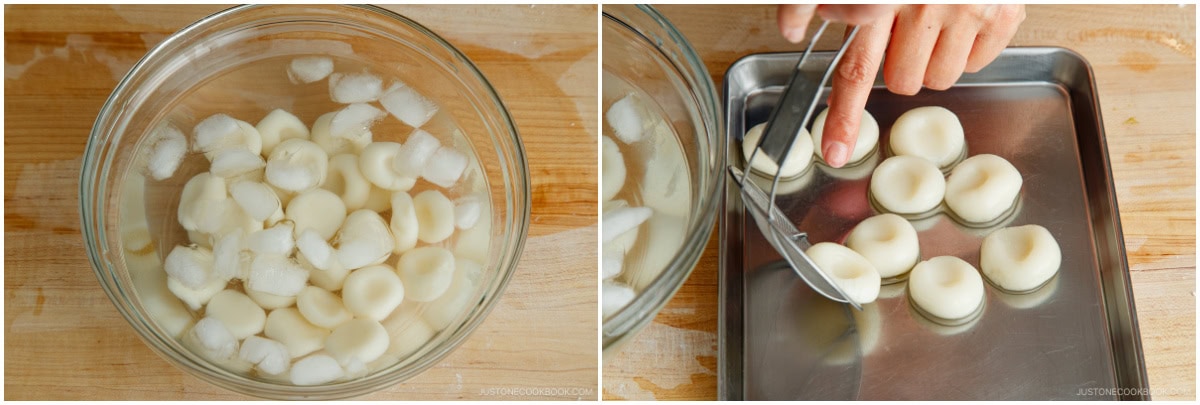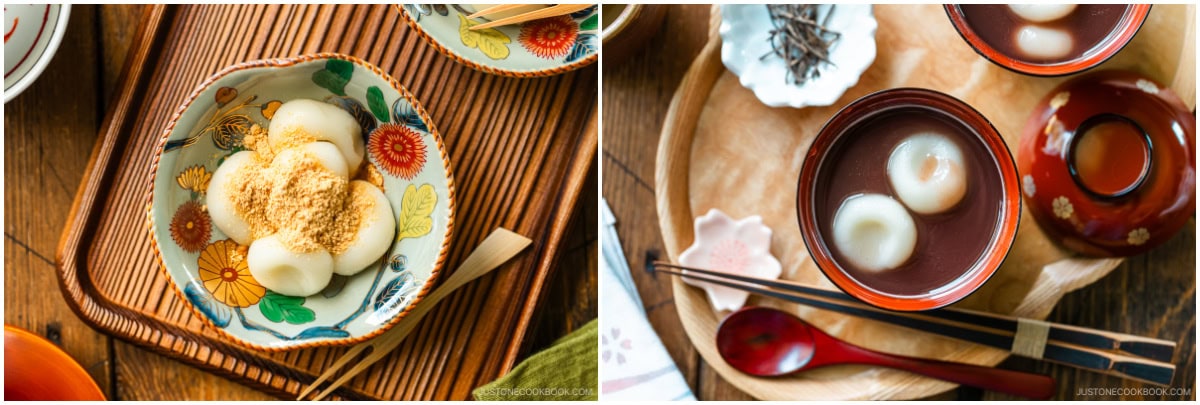Like most kids, I adored sweet Japanese desserts and snacks while growing up in Yokohama. I have many nostalgic memories of cooling off with refreshing kanten jelly and fruits (Anmitsu) on a sweltering summer day or warming up with sweet azuki bean soup (Oshiruko) on a chilly Japanese New Year. Both of these Japanese sweets have one ingredient in common—a small, white dumpling called shiratama dango (白玉団子). These dimpled, mochi-like balls are so easy to make at home whenever the craving strikes! Keep reading to learn how to make this simple Shiratama Dango recipe at home.
What is Shiratama Dango?
Shiratama dango are traditional rice flour dumplings made with shiratamako (白玉粉), a flour made from short-grain glutinous rice (mochigome, もち米). Refined of impurities, this flour gives the dumplings a smooth, springy texture and unique sweetness. First introduced from China, shiratama dango were highly valued by the Japanese imperial court and nobility during the Heian period (794–1185). While the general population gained access to them in the 13th and 14th centuries, it wasn‘t until the Edo period (1603–1868) that they became a common household food. We now enjoy them in everyday snacks as well as in Japanese tea ceremonies and traditional fine dining (kaiseki ryori).
Plain Mochi vs. Shiratama Dango
Shiratama dango is a type of mochi ball, and here are three ways they differ:
Ingredients – Shiratama dango is made from short-grain glutinous rice flour, also called sweet rice flour. Plain mochi starts with cooked short-grain glutinous rice or sweet rice.
Preparation – The dough for shiratama dango is shaped first, then cooked. In contrast, the rice for plain mochi is cooked first, then pounded and shaped into rice cakes.
Texture – Shiratama dango is springy, bouncy, gooey, and a bit chewy. It stays soft for up to 30 minutes after it’s made. Meanwhile, plain mochi is sticky, elastic, and very chewy. It hardens quickly as it cools and is usually air-dried for storage. Shiratama dango is softer than other types of dango (rice dumplings) like Mitarashi Dango.
Why You’ll Love This Recipe
This is a simple and fast recipe that you can use in so many ways.
Only 2 ingredients – While some versions add silken tofu to the mix, my recipe keeps it simple. Versatile – Use them hot or cold in various traditional and modern desserts. Quick mochi fix – It cooks up fast, and its bouncy and slightly chewy texture is irresistible. Easy to handle – Making dough using glutinous rice flour is much easier than cooking and pounding rice.
Ingredients for Shiratama Dango
The ingredient list couldn’t be shorter!
Shiratamako (白玉粉)– A chunky flour that produces the best texture and flavor; if you can’t find it, use mochiko (read below). Water – Use 3/4 cup water or less per batch; you may not need all of it.
Substitution Tips
If you use mochiko, be sure to add less water to the dough.
How to Make Shiratama Dango
Make it in just 15 minutes! See the recipe card for the straightforward and simple cooking method.
Recipe Tips and Techniques
Add the water gradually. Mix well and check the texture of the dough before adding more water. You may not need to add all the water. The dough is ready when it has a soft, earlobe-like texture. If you accidentally add too much water, don‘t mix it in. Quickly place a paper towel on top of the water to absorb it. If your dough is too runny, add more shiratamako and knead. Repeat until you achieve the right texture.
How to Store
To Refrigerate: If you are not using them right away, keep them in water and store in the refrigerator. To Reheat. Shiratama dango will become hard, so reheat them in boiling water to soften them before serving.
How to Serve and Use Shiratama Dango
Oshiruko/Zenzai – Dessert soup of sweet red beans (adzuki beans) Ujikintoki – Matcha shaved ice with green tea ice cream and matcha glaze Anmitsu – Kanten jelly with sweet toppings like anko, fruit like sliced banana, and drizzle of kuromitsu black sugar syrup (somewhat similar to maple syrup) Matcha Zensai – Dessert soup of powdered green tea Matcha Vegan Panna Cotta
Editor’s Note: This post was originally published on March 12, 2014. It was updated with more helpful content and new images on June 6, 2024, and republished on August 12, 2024.
